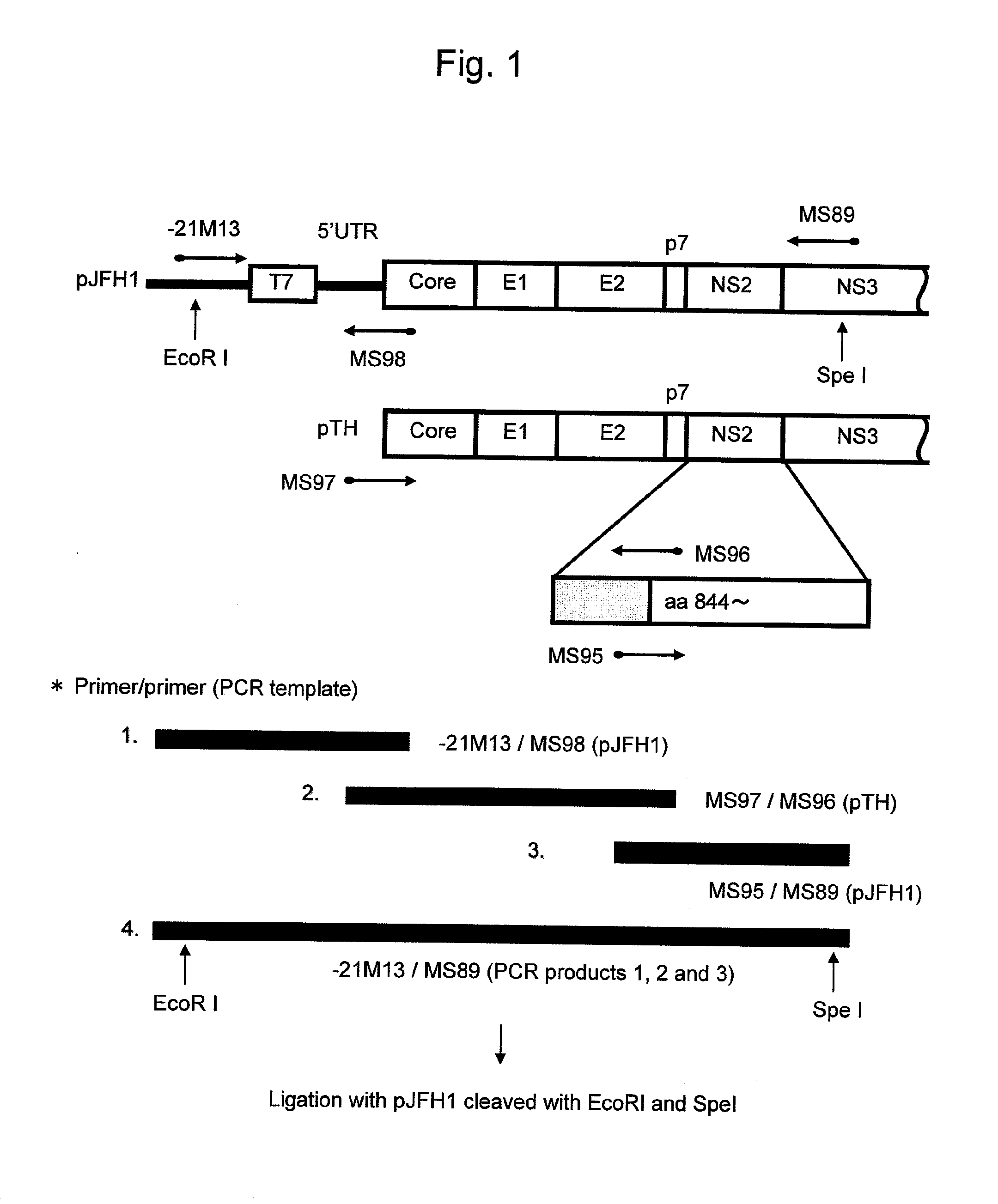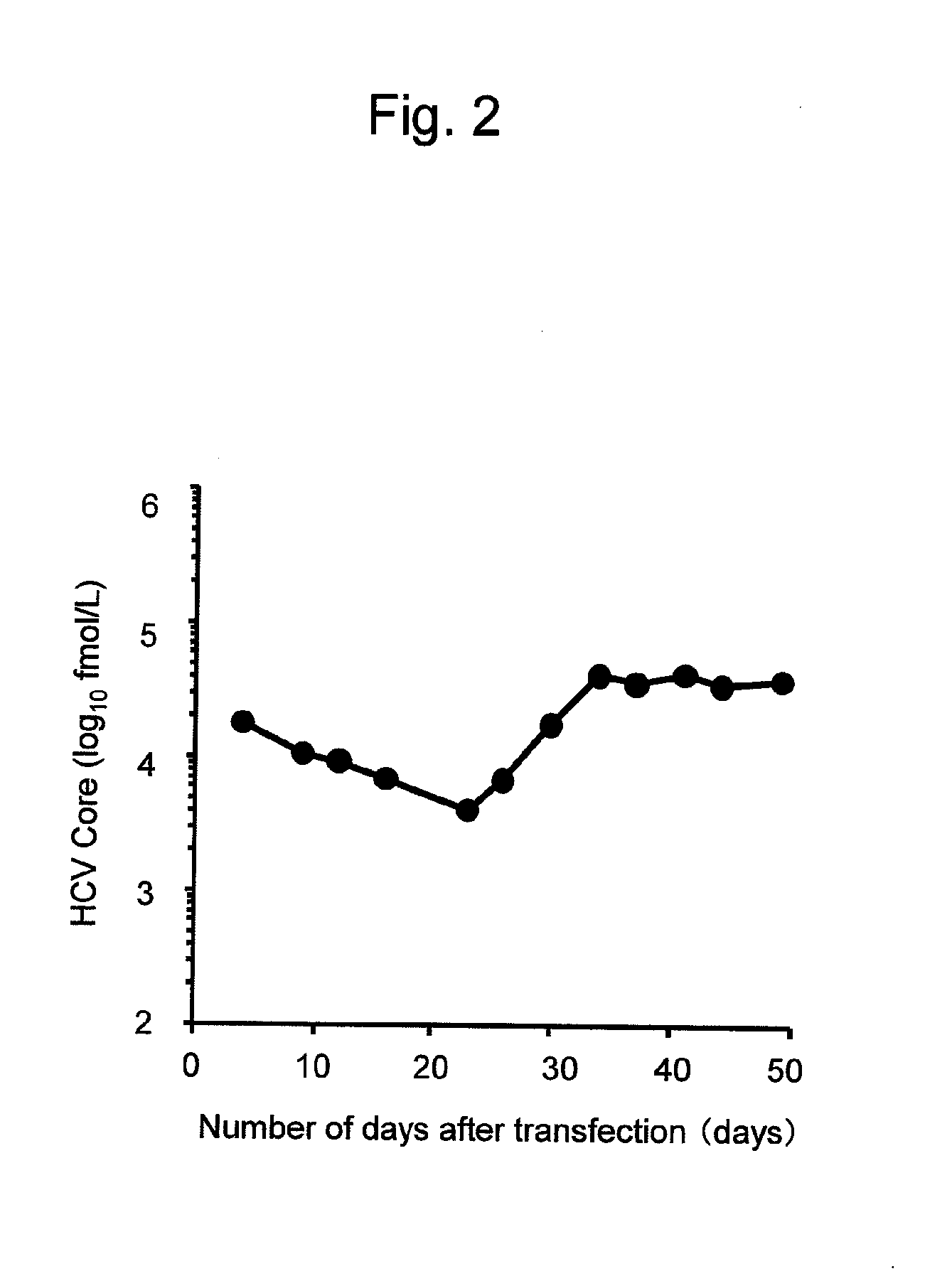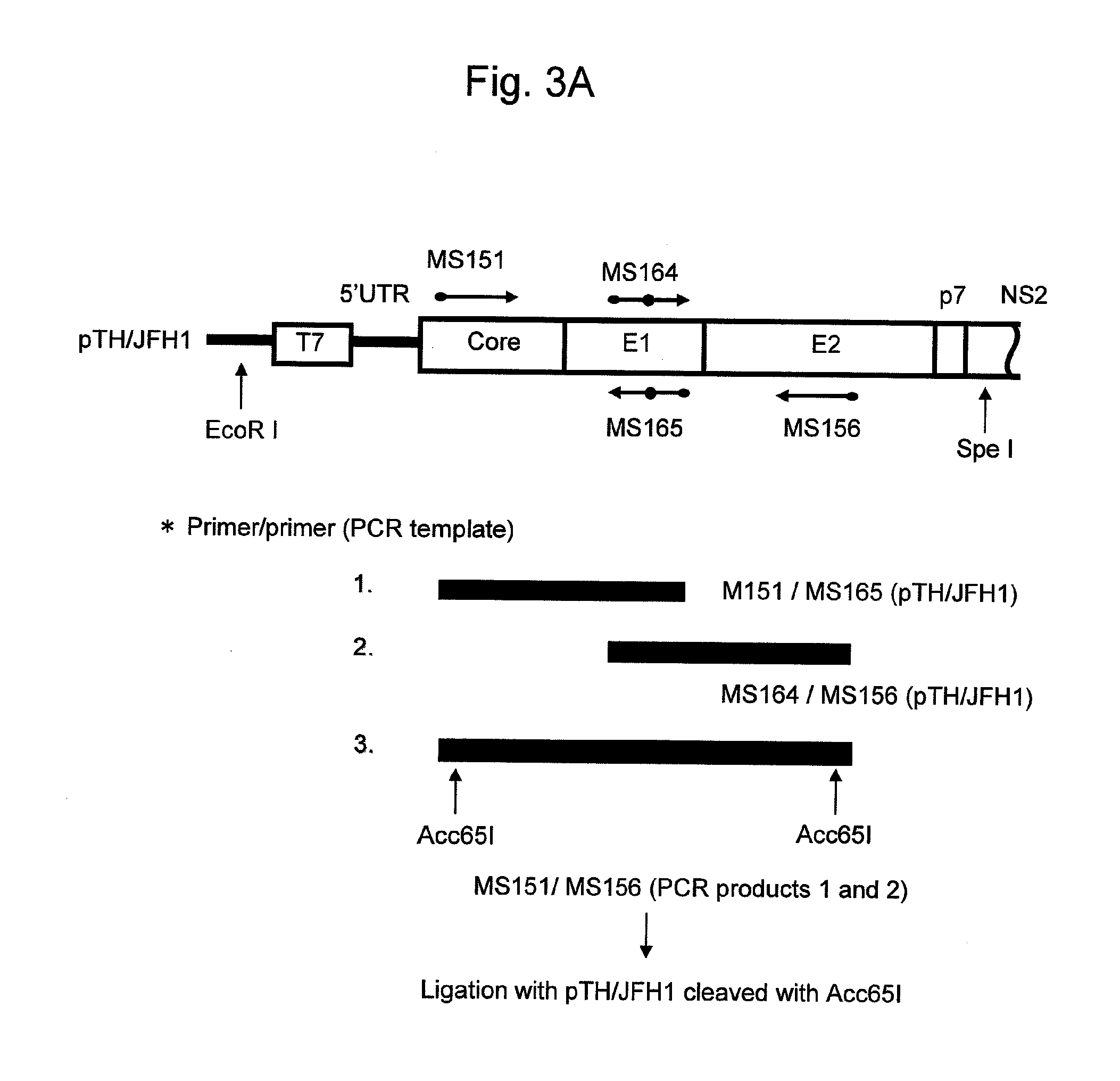Nucleic acid comprising chimeric gene derived from hepatitis c virus
a technology of hepatitis c virus and nucleic acid, which is applied in the direction of immunological disorders, drug compositions, peptides, etc., can solve the problems of virus inability to completely eliminate the body, lack of effective animals, insufficient therapeutic effects, etc., and achieve high cell infectivity, high productivity, and high ability to be produced
- Summary
- Abstract
- Description
- Claims
- Application Information
AI Technical Summary
Benefits of technology
Problems solved by technology
Method used
Image
Examples
example 1
Construction of TH / JFH-1 Plasmid
[0134]As cDNA of HCV genome RNA, cDNA of the TH / JFH-1 chimera comprising 5′ UTR that is from the JFH-1 strain of genotype 2a (GenBank Accession No. AB047639, Kato, T. et al., Gastroenterology, 125: 1808-1817, 2003), a region from the Core protein to the N terminal 33 amino acids of the NS2 protein that is from the TH strain of genotype 1b (Wakita, T. et al., J. Biol. Chem., 269: 14205-14210, 1994; Moradpour, D. et al., Biochem. Biophys. Res. Commun., 246: 920-924, 1998; and WO 2006 / 022422), and a region from the N-terminal amino acid 34 of NS2 to 3′ UTR that is from the JFH-1 strain of genotype 2a, was prepared.
[0135]SEQ ID NO: 5 shows the amino acid sequence of a protein encoded by TH / JFH-1. FIG. 1 shows a method for preparing such plasmid.
[0136]Specifically, cDNA corresponding to the entire genome RNA region derived from the JFH-1 strain was cloned into the pUC19 plasmid, and the resulting plasmid DNA, pJFH1 (Wakita, T. et al., Nat. Med., 11: 791-79...
example 2
In Vitro RNA Synthesis and Introduction Thereof Into Cell
[0142]pTH / JFH1 was cleaved with XbaI, and the resultant was then subjected to phenol / chloroform extraction and ethanol precipitation. Subsequently, the XbaI cleavage fragment was treated with Mung Bean Nuclease, and an 3′ terminal extra nucleotide sequence derived from the XbaI recognition sequence was removed. Further, proteinase K treatment, phenol / chloroform extraction, and ethanol precipitation were carried out to purify the DNA fragments. The cleaved plasmids were used as templates, and the reaction was allowed to proceed at 37° C. for 3 hours using the MEGAscript T7 kit (Ambion) to synthesize HCV RNA. After the reaction, the synthesized RNA was treated with DNaseI and extracted with acidic phenol, followed by purification via ethanol precipitation.
[0143]The Huh7 cells (3×106 cells) and 10 μg of HCV RNA were suspended in 400 μl of the Cytomix solution (120 mM KCl, 0.15 mM CaCl2, 10 mM K2HPO4 / KH2PO4, 25 mM Hepes, 2 mM EGTA...
example 3
Production of HCV Particles with Cells into which Th / Jfh-1 RNA Had been Introduced
[0144]At the time of subculture of cells into which TH / JFH-1 RNA had been introduced, the HCV Core protein contained in the culture supernatants was quantified using the HCV antigen ELISA test kit (Ortho) to confirm the production of HCV particles. As a result, the amount of HCV Core protein in the culture supernatant continued to decrease until 23 days after the introduction with the elapse of time, such amount began to increase 26 days after the introduction, and a constantly high amount of production was observed 34 days after the introduction (FIG. 2). Thus, it was considered that TH / JFH-1 RNA did not have the high capacity for virus production when it was introduced into Huh7 cell but it would acquire a high capacity for virus production upon introduction of an adaptive mutation necessary for virus production into the virus genome.
PUM
| Property | Measurement | Unit |
|---|---|---|
| Length | aaaaa | aaaaa |
| Fraction | aaaaa | aaaaa |
| Strain point | aaaaa | aaaaa |
Abstract
Description
Claims
Application Information
 Login to View More
Login to View More - R&D
- Intellectual Property
- Life Sciences
- Materials
- Tech Scout
- Unparalleled Data Quality
- Higher Quality Content
- 60% Fewer Hallucinations
Browse by: Latest US Patents, China's latest patents, Technical Efficacy Thesaurus, Application Domain, Technology Topic, Popular Technical Reports.
© 2025 PatSnap. All rights reserved.Legal|Privacy policy|Modern Slavery Act Transparency Statement|Sitemap|About US| Contact US: help@patsnap.com



